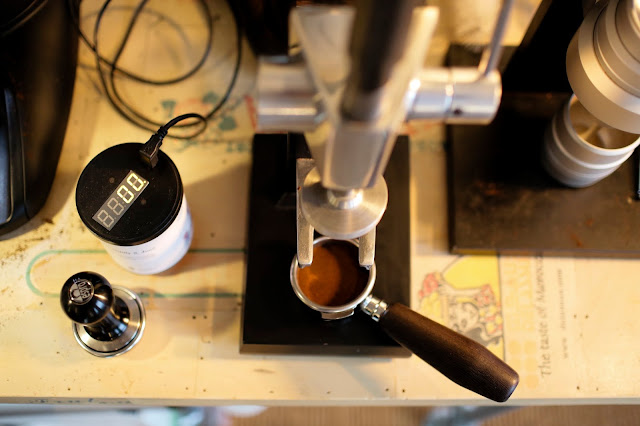Talk Tonino To Me
(Jan van der Weel and I prepared & wrote this article together and you can also find it on his blog)
Many coffee roasters use roast color meters to monitor the quality and consistency of their roasts. Furthermore, calibrated roast color can be used for productive communication between roasters and coffee traders. For instance, a trader could provide a target roast color for a specific coffee. Also, coffee roasters around the world could share information about the roast color they find best for certain beans.
What does the color of a roast tell you? It tells you about certain things to expect in the cup.
A few examples. A lighter roast is associated with a more bright flavour profile and a very dark coffee can taste pungently smoky. Aroma and flavour compounds like flowery, fruity and caramel appear in relation with roast color. Roast color is also used to select brewing methods. Certain very light roasts could be difficult to extract properly with an espresso machine.
Many years ago, roast color meters were very expensive but with the emergence of the Tonino device from the team at http://my-tonino.com, the market offers a very affordable roast color meter.
Frans Goddijn and I both use the Tonino color meter and we frequently communicate about the target roast color for certain beans. However, after comparing our measurements with beans from one identical roasted batch, we noticed that this roast measured a different color code on Frans his Tonino compared to mine. And we need a shared reference to be able to exchange data in a meaningful way.
Frans and I were puzzled and we decided to find and eliminate the cause for the differences. One possibility we briefly considered was a difference inside the devices themselves. Were they caused by the Tonino, the energy supply or the calibration disks? We did many tests and found this not to be the case.
The Tonino is very reliable, even when you use different calibration disks.
But what was the reason for these differences? A new series of tests showed that the differences were caused by tamping pressure and grind setting. A stronger tamping pressure and a coarser grinding setting both lower the color reading on the color meter. This can be seen in the following charts.
A higher tamping pressure causes a lower color reading.
Chart 1: The effect of tamping pressure on roast color value. Samples were ground on the HG1 grinder
A finer grind causes a higher color reading
Chart 2: The effect of grinder setting. Samples were ground on the EK43 grinder
These findings means that for consistent color readings you need to use the same grind setting and the same tamping pressure.
Is it possible to get the comparable color readings by using different grinders and a different tamping procedure?
To test this, we used two grinders (the HG1 and EK43) and two calibrated tampers (Macap and Espro). By changing the grind setting of the EK43 we tried to get the same color readings of the HG1. Our results show this is possible.
Chart 3: Color values after calibrating grind setting. We used the Espro tamper that had the highest tamping pressure and needed to grind a little finer (setting 1) to get a comparable color reading.
Is it possible to communicate about roast color between traders and roasters?
Yes, it is proves possible to communicate about roast color between traders and roasters. But first you need to be sure that both your color measuring devices see the same. You can do this by adjusting the grind setting.





Reacties